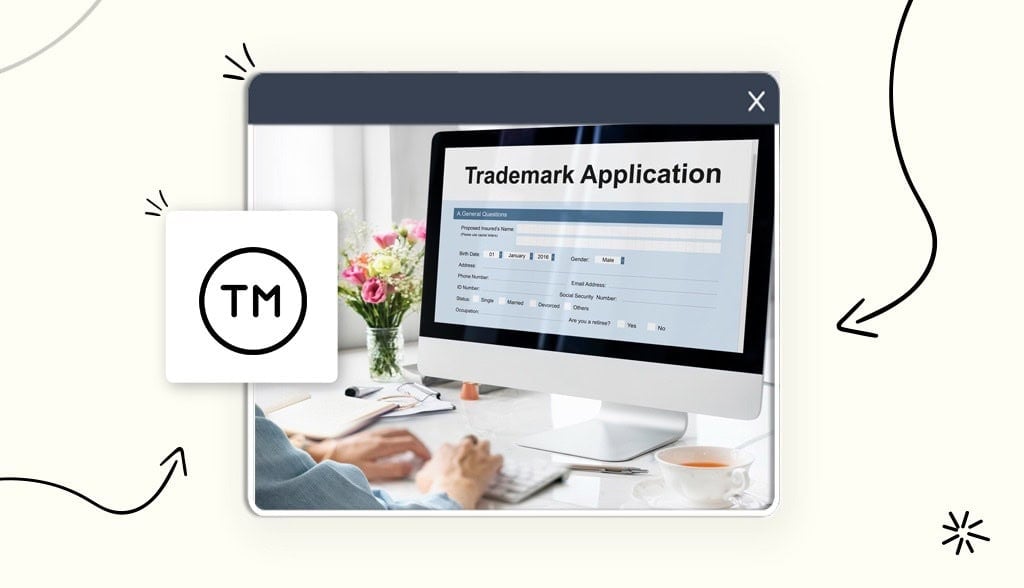Trademark maintenance involves taking specific steps to ensure your trademark remains valid.
Here’s a quick breakdown of your trademark maintenance duties:
- You must use your trademark in commerce (be trading) using the mark.
- File renewal documents within specific times and pay the fees.
- Use your trademark correctly and ensure any 3rd party businesses using it do so, too.
- Ensure your trademark evolves with your business.
- Monitor your mark to report infringements.
You might wonder if the USPTO takes care of number 5, but trademark maintenance is the responsibility of the person/organization registering the mark. You must complete all the above steps to ensure your protection remains valid.
How to Maintain Your Trademark
Thankfully, learning how to maintain your trademark is like riding a bike: Once you get those wheels turning, there’ll be no stopping you.
Here’s how the first part works:
You fill out and file the USPTO’s renewal files on the required date to tell the USPTO that you’re still using your trademark. This updates their system, keeping your mark active in their database.
Here’s how you file for renewal:
File for renewal
Trademarks remain valid for the first 6 years from registration, then every 10 years after. When you renew your trademark it resets the protection clock to zero, starting the process again. Failing to do so before the due date or within the grace period (6 months) can result in losing your trademark protection.
How to renew your trademark:
- Visit the USPTO’s Trademark Electronic Application System (TEAS).
- Submit a signed section 8 declaration renewal form saying you’re still using the mark in commerce.
- Complete all fields and attach images showing your trademark in use.
- Enter your credit card details into the website to pay the filing fees.
- Repeat these steps every 10 years to maintain registration.
You can also apply by mail or use a trademark renewal service. However, if you do, you need the answer to the question below:
Are all trademark renewal services safe?
You can employ a trademark lawyer to monitor your renewal dates and file the correct forms. But be careful when choosing one because there are many scam websites that offer this service for crazy fees.
Fortunately, the USPTO provides a list of potential scam trademark renewal services to help you avoid them.
Cost
As a trademark holder, you must pay 2 types of USPTO fees at different renewal dates.
Section 8 Declaration: For filing between years 5 and 6 after registration, $125 electronic or $225 paper per class for each Section 8 Declaration of Use.
Section 9 Renewal: For filing between years 9 and 10 after registration, $300 electronic or $500 paper per class or you can use a Section 8/Section 9 combined for $525 per class.
Late filing fees: When you apply for renewal during the 6-month grace period you must pay an additional per-class fee of $200.
Deadlines
You must file renewal documents between years 5 and 6, and again every 10 years after the initial registration.
Renewal deadlines ensure trademark owners meet the USPTO requirements. For example, one of the requirements is continued use in commerce, because if you don’t use your mark for 3 consecutive years, your trademark will be abandoned.
You can’t extend renewal deadlines, but you get a 6-month grace period to file your renewal application if you miss a deadline. However, if you also miss that one, your trademark could expire.
Here’s a quick recap of renewal filing dates and forms:
- Between the 5th and 6th years after registration: File a “Declaration of Use and Excusable Nonuse under section 8.”
- Between years 9 and 10 after registration: File the Declaration of Use or Excusable Nonuse and an Application for Renewal under sections 8 and 9.
- Every 10 years after: File subsequent Declarations of Use or Excusable Nonuse and an Application for Renewal under sections 8 and 9.
Reminders
The USPTO sends a Courtesy email Reminder to trademark owners via the email address provided upon registration. You must select “receive email notifications” when registering your trademark application to receive an email reminder.
But if you miss a deadline and grace period, all’s not lost. The USPTO allows you to pay a late filing fee of $200 for paper and $100 for electronic.
You can learn about grace periods, filing early, and deadlines that fall on a Saturday, Sunday, or federal holiday on the USPTO website.
Okay, in part 2, we’ll look at what your duties for continued trademark compliance are and why the responsibility of policing your mark falls firmly on your shoulders.

